Week 7.3 Branding
Before we start the concept of branding, we will consider the product life cycle and consumers’ preferences on adopting new products.
We have talked about the product life cycle in the previous lessons. Product life cycle exists for product class and product form.
Product class refers to the entire product category or industry, such as video game consoles.
Product form refers to the variations within the class. Such examples for video games include Sony's PSP, Nintendo's Wii, etc.
Product Life Cycle and Consumers
As products go through a life cycle, consumers adopt the products based on their own preferences. Some people are interested in trying the new products as early as possible while other people wait until they see their network of family/friends use the item.
The figure below shows the consumer population that is divided into five categories.
Product Adopters. Product adopters in the consumer population: innovators (2.5%), early adopters (13.5%), early majority (34%), late majority (34%), and laggards (16%).
©University of Waterloo
In many cases the success of products depends on the reviews of innovators and early adopters. If they have a good experience, it encourages early majority, late majority, and laggard categories to go ahead and take an interest in the new product.
As marketers, we are interested in the factors that potentially would affect whether a consumer will adopt a new product.
Stop and Think Question: What would companies do to try to stimulate initial trial of new products?
Click to reveal answer

marekuliasz/iStock/Getty Images
The initial trial of new products is critical to their success. Companies invest in applications to encourage the trial. Some examples are as follows:
- warranties
- money-back guarantees
- extensive usage instructions
- demonstrations
- free samples
Branding
Branding is a critical activity in the success of products/services. Branding refers to how organizations use a name, phrase, design, symbols, or combination of these to identify their products/services and distinguish them from those of competitors.
Marketers face several forces as they try to effectively build and manage brands.
These environmental forces could include:
- the empowered consumer,
- social media/new technologies,
- increased pressure to demonstrate a return on investment,
- changing demographics, and
- globalization.
Marketers use concepts such as brand name, brand personality, brand ambassadors, brand equity, and different branding strategies to engage with the environmental forces. We will introduce these concepts in this lesson.
Brand Name
Brand name in branding is not necessarily a word. Brand name is any word, device (design, sound, shape, or colour), or combination of these used to distinguish a seller's goods or services.
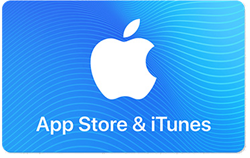
Retrieved from https://support.apple.com/en-ca
Example: Apple uses the shape that looks like an apple as their brand name.
Brand Personality
Brand personality is a concept in branding that could be helpful in establishing successful brands. Brand personality refers to a set of human characteristics associated with a brand name. Some examples would include personality qualities such as traditional, romantic, or sophisticated. These type of characteristics help consumers choose brands that are consistent with their own or desired self-image.
Brand personality helps companies connect with customers and engage them. As consumers build a long-term relationship with the product/service, they have the potential to become “brand ambassadors.” Brand ambassadors are people who will spread the word about the brand. They encourage other people to use the brand.
Brand personality allows the brand to create authenticity through the humanization of the brand. Marketers aim at creating “brand as friend.” Brands that engage consumers at a human level can easily achieve a trusted and long-term relationship.

Masemola, T. (2013, September 3). Harley Davidson Shows Off New Brand Ambassadors.
Retrieved from http://www.in4ride.net/?p=797
Example: The brand personality of Harley Davidson has been a “rebel” as motorcycles are introduced as mean machines. The use of bright colors helped to establish the brand personality. “We selected our ambassadors based on their enthusiasm for riding and their personal connection with our brand,” says Michael Carney, Marketing Manager at Harley-Davidson Africa. Harley-Davidson Africa selected three of South Africa’s popular personalities - David Tlale, Angie Khumalo, and DJ Fistaz Mixwell as their brand ambassadors in 2013. The ambassadors selected the bikes that reflect their personalities and styles and they ride the bikes during their ambassadorship.
Brand Equity
Brand equity refers to the added value that a brand name gives to a product beyond the functional benefits provided.
The brand name becomes an intangible asset if marketers are able to create brand equity.
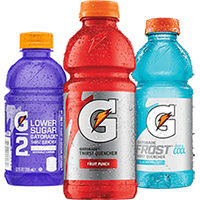
Retrieved from https://www.gatorade.com/
Examples: Successful, established brand names, such as Google, Gatorade, and Apple, have an economic value attached to their brand.
There are two distinct advantages of brand equity.
- Brand equity provides a competitive advantage. Not every brand is able to establish brand equity. The ones that carry brand equity have a competitive advantage over the ones with no brand equity.
- Brand equity allows companies to charge a higher price. Consumers are often willing to pay a higher price for a product with brand equity.

Retrieved from https://www.duracell.com/
en-ca/oem/global-oem-sales-team-supply-chain/
Example: The pricing of Duracell batteries and Louis Vuitton luggages are well above the market price for such products. Their price premium is arising from their brand equity.
Branding Strategies
There are four main branding strategies.
Four Branding Strategies. The four main branding strategies include multiproduct, multibranding, private, and mixed.
©University of Waterloo
Multiproduct Branding Strategy
In multiproduct branding, businesses use one name for all their products in a product class. This is also called family branding.

Retrieved from https://newsroom.toro.com
/en/rental
Example: Toro makes Toro snowblowers, Toro lawn mowers, Toro garden hoses, and Toro sprinkler systems. All of the products have the same brand name.
There are several advantages to multiproduct branding:
- Consumers’ good experience with one product will transfer to the other products with the same brand name.
- Multiproduct branding helps lower advertising costs. Since the same name is used on all products, raising awareness for one product helps the exposure of the other products with the same brand name.
A disadvantage of multiproduct branding is that if consumers have a negative experience with one product, the unfavourable attributes transfer to the other products that carry the same brand name.
There is also the practice of co-branding. In the case of co-branding, businesses pair two or more recognized brands on a single product or service.

Retrieved from https://www.westjet.com/en-ca/travel
-info/inflight/entertainment
Example: WestJet and Bell co-brand in delivering an in-flight experience to WestJet guests.
Multiproduct branding helps to lower the cost of advertising. Since the same name is used on all products, raising awareness for one product helps the exposure of the other products with the same brand name. Companies come up with creative branding strategies to lower the cost of advertising even if they do not apply multiproduct branding. One such strategy is known as cohort brand management.
Cohort brand management refers to the bundling of one company's multiple brands into a single marketing effort aimed at a common consumer group.

Retrieved from https://www.pgeveryday.ca/tag/febreze
Example: Procter & Gamble uses cohort brand management via its website HomeMadeSimple.com where it promotes several P&G brands, including Mr. Clean, Swiffer, and Febreze.
Multibranding
Multibranding involves giving each product a distinct name. It is a useful strategy when each brand is intended for a different market segment as it helps to distinguish different products.
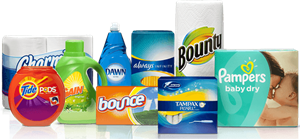
Retrieved from https://www.pg.ca/en-CA/
Example: Proctor & Gamble has many brands under its umbrella. They all have different brand names. Some examples are Tide, Cheer, and Ivory Snow.
The main disadvantage of a multibranding strategy is related to the cost of marketing promotions. Promotional costs tend to be higher with multibranding since businesses must generate awareness for each new brand name.
The advantage of a multibranding strategy is related to the transfer of experiences. Since each brand is unique to each market segment, there is no risk that one product's failure will affect other products in the line.
Private Branding
Private branding is when the firm manufactures products but sells them under the brand name of a wholesaler or retailer. It is also called private labelling.
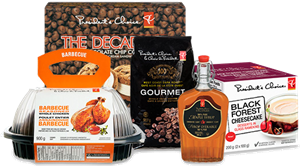
Retrieved from https://www.loblaws.ca/collections/Presidents
%20Choice%20Brand%20Page/017016000000
Example: Loblaws' President's Choice label is a successful private brand.
Mixed Branding
In a mixed branding strategy, a firm markets its products under its own name(s) and that of a reseller.
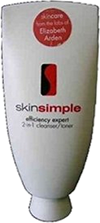
Retrieved from https://www.walmart.com
/ip/Elizabeth-Arden-Skin-Simple-Efficiency
-Expert-2-in-1-Cleanser-Toner
-6-8-oz/193014150
Example: Elizabeth Arden brand sells its line of skincare products at Walmart with the “skinsimple” brand name. Elizabeth Arden also sells their products under their own name but not in Walmart stores.
Emerging Branding Concepts
There are new branding strategies that are emerging in the markets. One such strategy is social benefit brands. These are brands that have a special added value in terms of the core environmental or social benefits that they provide.
Some social benefit brands are focused on environmental sustainability. They are also called green brands. Others focus on different non-environmental social benefits such as poverty.

Retrieved from https://www.toms.ca
/what-we-give
Example: TOMS is a social benefit brand. They market shoes. When they sell a pair of shoes, another pair of shoes is given to a child who is in need. It is peace of mind for the consumers that they know someone in need will be getting a new pair of shoes as a result of their purchase.

Retrieved from http://www.evergreenmemories.ca/
Example: Evergreen Memories is a green brand. It is located in northwest Ontario as an eco-friendly (green) business. They market earth-friendly gifts. It is a green brand because they achieved commercial success while helping to preserve the planet. Female entrepreneur Margot Woodworth is the driving force behind the business. She believes that by the time her customers celebrate their silver wedding anniversaries, their wedding guests will have nurtured small forests that will both beautify and protect the planet.
Margot is happy to see the interest from large eco-friendly companies. They want to use “green favours” as part of their promotional efforts. Evergreen Memories markets products to companies that wish to provide eco-gifts to their customers and clients.